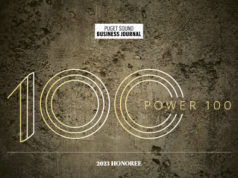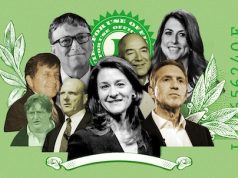
Jeopardy “Question:” A twice-returning Jeopardy TV game show champion who is a veteran tech columnist, author, blogger and consultant to publications like The Seattle Times, The New York Times, the Economist, MacWorld, BoingBoing, Take Control Books, TidBITS and more.
Jeopardy “Answer:” Who is Glenn Fleishman? (Applause).
FINAL Jeopardy Question: “The iOS mobile “app” founded by Instapaper creator Marco Ament that some consider to be the model for sustainable, high quality magazine content publishing in a post-newsprint world.”
FINAL Jeopardy Answer: “What is ‘The Magazine?'”
You are correct, sir, or madame. What was your Final Jeopardy wager?
If you bet like Rupert Murdoch you may have already risked many millions of dollars, and in News Corp’s case, on the wrong experiment. “The Daily” was a prototype iOS news app that functioned like a day-to-day newspaper with a similar newsroom infrastructure. The Daily also published a salvo of content that was “all things for all eyeballs.” In contrast, The Magazine is carving out a niche as a publication for those who, get this, know a little something about technology. [Note: We’re posting this story just days after News Corp. announced it was shuttering The Daily, dismissing a crew of 100 or more. Glenn points out how the weight of that kind of overhead is really self-defeating. -Ed.]
The Magazine is somewhat more similar to the concept founder Marco Arment created for his other publishing breakthrough: Instapaper. Like Instapaper, The Magazine is comprised of curated content tailored to appeal to your favorite interests, things you actually want to read, and that you can easily read at your own pace, “out of the flow of the maelstrom of stuff that’s coming through the pipeline,” says Glenn.
The New Yorker doesn’t run stories that are of interest to people who know something about technology or who wonder about the tech underpinnings or implications, the tech “whys and wherefores,” of newsworthy development. The Magazine is very different. Whether it’s Lex Friedman writing on new “Wet Shaving” technologies or an article about making tea, “if you like tech you’re going to like to hear about things associated with it,” says Fleishman.
 Will The Magazine backstop the survival of other print pubs or be an accelerant in their extinction? Admittedly, the scenario feels a bit like “Double Jeopardy,” which says to us that Glenn and Marco ought to be granted immunity from any fallout from this bold, new venture. The future of the publishing business is indeed in jeopardy. Perhaps the notion of The Magazine can save it. [“What it’s like to be on Jeopardy” for real? Read Glenn’s article on Boing Boing. http://boingboing.net/2012/10/19/the-reality-show-that-acts-lik.html ]
Will The Magazine backstop the survival of other print pubs or be an accelerant in their extinction? Admittedly, the scenario feels a bit like “Double Jeopardy,” which says to us that Glenn and Marco ought to be granted immunity from any fallout from this bold, new venture. The future of the publishing business is indeed in jeopardy. Perhaps the notion of The Magazine can save it. [“What it’s like to be on Jeopardy” for real? Read Glenn’s article on Boing Boing. http://boingboing.net/2012/10/19/the-reality-show-that-acts-lik.html ]
In a recent online discussion with Daring Fireball’s John Gruber, Glenn spotlighted some of the”mag-ro-economics” behind The Magazine and explained why questioning the conventional wisdom of publishing is a smart idea.
“Getting a printed magazine on a physical newsstand in the past has been costly, involving everything from placement fees to annual placeholders. Digital distribution is completely different. The reason print magazines cost around $7 and a yearly subscription is $20 or more has to do with the incredible intermediation that adds cost. With digital distribution, where you don’t have to build the distribution platform just the content in the medium is great.”
Right now, at just $2 per month subscribers will get two issues per month, each edition with 4 or 5 articles that run around 1,000 words each. The emphasis is on quality not quantity. This is not a big readership commitment.
“If we are successful it ought to be a more than sustainable venture,” said Fleishman.
Admittedly, nothing is more gratifying to Glenn who knows there is a dearth of opportunities for writers to earn a living wage. He comments, “As editor, I get to play ‘candyman’ for the next year. The amount of money we’re going to be able to pay other people for good writing is actually more exciting to me than whatever money I will make from working on it.” Invaluable words from a writer who has once, or twice, been paid bedrock minimum of 50¢ a word by none other than New York Times.
Harkening back to his arrival to Seattle in 1993, Glenn recalls connecting with Adam and Tonya Engst, the founders of TidBITS, one of the world’s oldest newsletters not only about the Apple Macintosh but on any subject. “TidBITS is now the longest, continually published newsletter on the Internet,” Glenn said. “There was an Irish publication and another one in China that fell away. So for coming out on a regular basis, we think we are now the longest — which cracks us up!”
 A true publishing pathfinder, Glenn started out as a typesetter with plans for a career in graphic design. But, he explained, “I’ve always had an aptitude for computers, so I very often found myself in the role of translator, explaining the new rules of publishing to graphic designers, or networking protocols to the staff at The Economist (where Glenn also writes continuously for the “Babbage Blog.”) It seems Glenn has always been a “go to” Answer man.
A true publishing pathfinder, Glenn started out as a typesetter with plans for a career in graphic design. But, he explained, “I’ve always had an aptitude for computers, so I very often found myself in the role of translator, explaining the new rules of publishing to graphic designers, or networking protocols to the staff at The Economist (where Glenn also writes continuously for the “Babbage Blog.”) It seems Glenn has always been a “go to” Answer man.
In the beginning, or shall we say A.D. (After Digital), Glenn co-founded the Point of Presence Company (“POPCO”), one of Seattle’s very first Web develoment and hosting companies. He sold POPCO in the fall of 1996 to join Amazon.com where he was the Catalog Manager from October 1996 to May 1997.
The WiFiNetNews Blog was yet another blogging milestone for Glenn and networking a longtime personal passion. Yet, as technology’s standards have evolved so have Glenn’s tutelage of those standards.
Today, living in Seattle with a wife and two sons, Fleishman also has plans to produce a new podcast, tentatively titled “The New Disrupters.”
“The notion is that we’ve had the tools to create stuff for decades now, said Glenn. “All of the digital tools that create things, including 3D objects, are here today. You can get a 3D printer in your house for a thousand bucks or less!” he exudes! “The New Disruptors” may someday be another winning Jeopardy answer, or a “Daily Double” question. [24×7]




















